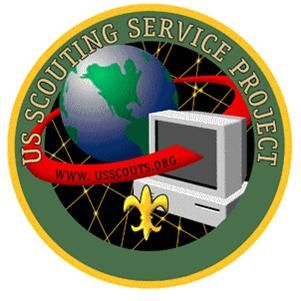General Information
The Guide to Advancement - 2019 (Publication No. 33088 - SKU 648216) and 2019 Scouts BSA Requirements (Publication No. 33216 - SKU 648914) are the official Boy Scouts of America sources on Scouts BSA advancement procedures.
When there is a conflict between two published lists of requirements, such as Scouts BSA Requirements and a Merit Badge pamphlet or the Scouts BSA handbooks, the requirements book should normally be considered to be the controlling document, until a newer edition of Scouts BSA Requirements is issued. However, the following excerpt from the Guide to Advancement, 2019 explains what to do when merit badge requirements change:
7.0.4.3 What to Do When Requirements Change
The current annual edition of Scouts BSA Requirements lists the official merit badge requirements. However, those requirements might not match those in the Scouts BSA Handbook, the merit badge pamphlets, and the requirements listed at www.scouting.org/meritbadges because the Scouts BSA Requirements book is updated on an annual basis. When new or revised merit badge requirements appear in the Scouts BSA Requirements book, any Scout beginning work on a merit badge must use the requirements as stated therein. However, if changes to merit badge requirements are introduced in a revised merit badge pamphlet or at www.scouting.org/meritbadges during the year after the Scouts BSA Requirements is released, then the Scout has through the end of that year to decide which set of requirements to use.
Once work has begun, the Scout may continue using the requirements he or she started with until completion of the badge. Alternatively, the Scout may choose to switch to the revised requirements. Sometimes, however— especially for more significant changes—the Scouts BSA Handbook, the Scouts BSA Requirements book, www. scouting.org/meritbadges, or official communications from the National Council may set forth a different procedure that must be used and may establish a date by when use of the old requirements must cease.
There is no time limit between starting and completing a badge, although a counselor may determine so much time has passed since any effort took place that the new requirements must be used.
The authoritative source for all merit badge requirements is the current year’s Scouts BSA Requirements book.
In addition, the following information is included on the inside front cover of the 2019 edition of Scouts BSA Requirements:
The requirements listed in this Scouts BSA Requirements book for rank advancement, Eagle Palms, and merit badges are the official requirements of the Boy Scouts of America and are effective Jan. 1, 2019, through Dec. 31,2019. However, the requirements on the following pages might not match those in the Scouts BSA handbooks and the merit badge pamphlets, because this publication is updated only on an annual basis. The most current and any updated merit badge requirements can be found at www.scouting.org/meritbadges.
When new or revised merit badge requirements appear in this Scouts BSA Requirements book, any Scout beginning work on a merit badge must use the requirements as stated therein. However, if changes to merit badge requirements are introduced in a revised merit badge pamphlet or at www.scouting.org/meritbadges throughout the year, then the Scout has through the end of the current calendar year to decide which set of requirements to use.
Once a Scout begins work, the Scout may continue using the requirements the Scout started with until completion of the badge. Alternatively, the Scout may choose to switch to the revised requirements. Sometimes, however especially for more significant changes the Scouts BSA handbooks, the Scouts BSA Requirements book, www.scouting.org/meritbadges, or official communications from the National Council may set forth a different procedure that must be used. The National Council may establish a new date for when use of the existing requirements must cease.
There is no time limit between starling and completing a badge, although a counselor may determine so much time has passed since any effort took place that the new requirements must be used.
No council, district, unit, or individual has the authority to add to, or to subtract from, any advancement or merit badge requirements, for more detailed information, see the Guide to Advancement, which is available online at www.scouting.org/resources/guide-to-advancement
On February 1, 2019, BSA changed the name of their program for youth between the ages of 11 and 18 from Boy Scouts to Scouts BSA, opened the program to young girls, and issued two editions of the Scouts BSA handbooks which replaced the Boy Scout Handbook.
Information in the 2019 Scouts BSA Requirements book
The list of changes on the inside front cover of the new edition of Scouts BSA Requirements identifies changes to the requirements for one rank (Scout), changes to 21 merit badges, the deletion of one "Special Opportunity" (the BSA Lifeguard Award) and changes to almost all Special Opportunity awards.
In addition to the listed changes, changes were made to the introductory material. Furthermore, as a consequence of the announced change from Boy Scouts to Scouts BSA, some minor changes, to make the wording "gender neutral", were made to the requirements and notes for the other ranks, some merit badges, and some of the "Special Opportunities".
Temporary Transition Rules for Females entering Scouts BSA
On February 1, 2019, the Boy Scouts of America began admitting girls into Scouts BSA. As part of that change to the program, BSA has established some temporary transition rules, and published those rules in early October 2018.
In general, the following rules will be in effect from February 1, 2019 through December 31, 2019.
- Youth 16 years of age or older, but not yet 18, on February 1, 2019 who register as members of Scouts BSA on or before December 31, 2019, may request extensions to complete the Eagle Scout Award requirements after they turn 18 years of age.
- Requests for extensions must be received no later than thirty (30) days after turning 18 years of age. Extensions must be in writing by submitting the designated form to the National Service Center and the form must be received no later than January 7, 2020. Only the National Council may grant extensions. The actual extension will be based upon the individual’s registration date and age at the time of the request and will provide not more than twenty-four months from the date of initial registration to complete all requirements.
- In the interest of fairness, these temporary transition rules apply to all youth joining Scouts BSA during 2019–both girls and first-time joining boys.
A copy of the document they released can be obtained, by Clicking here.
In the notes below, changes to male gender specific terms which
have been made to reflect the change to family Scouting
such as replacing "Boy Scouts" with "Scouts BSA" are described as "gender
neutrality" changes.
Index of Changes
Changes to Introductory Material
Age Requirement Eligibility
Changes were made to this topic, the changes were as follows:
Merit badges, badges of rank, and Eagle Palms may be earned by a registered Boy Scout or a qualified Venturer or Sea Scout. He may earn these awards until his 18th birthday Any Venturer or Sea Scout who has achieved the First Class rank as a Boy Scout in a troop or as a Lone Scout may continue working up to his 18th birthday toward the Star, Life, and Eagle Scout ranks and Eagle Palms. registered Scouts, including Lone Scouts, and by qualified Venturers or Sea Scouts who are not yet 18 years old. Venturers and Sea Scouts qualify by achieving First Class rank as a Scout or Lone Scout (or as a Varsity Scout prior to Jan. 1, 2018). The only exceptions for those older than age 18 are related to Scouts registered beyond the age of eligibility and those who have been granted time extensions to complete the Eagle Scout rank.
Rank Advancement for Venturers and Sea Scouts
Changes were made to this topic, the changes were as follows:
- Any male Venturer or Sea Scout who has achieved the First Class rank as a Boy Scout in a troop, or as a Lone Scout (or as a Varsity Scout prior to Jan. 1. 2018), may continue advancement up to his their 18th birthday toward the Star, Life, and Eagle Scout ranks, and Eagle Palms.
- He Qualified Venturers and Sea Scouts must meet the requirements as prescribed in the official Boy Scout Handbook Scouts BSA handbooks and the current Boy Scout Scouts BSA Requirements book.
- The Venturer may fulfill leadership requirements by serving as president, vice president, secretary, treasurer, den chief, historian, guide, quartermaster, chaplain aide, or outdoor ethics guide.
- The Sea Scout may fulfill leadership requirements by serving as boatswain, boatswain's mate, purser, yeoman, storekeeper, crew leader, media specialist, specialist, den chief, or chaplain aide.
- The unit leader conference will be conducted by the Advisor or Skipper. As the Venturer or Sea Scout fulfills requirements for the Star and Life ranks, a board of review must be conducted by the crew or ship committee according to the procedures established by the National Council as published in the Guide to Advancement. Eagle Scout boards of review are conducted in accordance with the Guide to Advancement and procedures established by the local council.
- The Eagle board of review should follow the procedures established by the local council.
Scout, Tenderfoot, Second Class, and First Class (Notes)
Changes were made to two notes which apply to each of these ranks. The note changes are as follows:
The requirements for the Scout, Tenderfoot, Second Class, and First Class ranks may be worked on simultaneously; however, these ranks must be earned in sequence.
Alternative requirements for the {Scout/Tenderfoot/Second Class/First Class} rank are available for Scouts with physical or mental disabilities if they meet the criteria listed in the Boy Scout Scouts BSA Requirements book.
Scout, Tenderfoot, Second Class and First Class - Alternative Requirements
Changes were made to this topic, the changes were as follows:
A Scout who has with a permanent physical or mental disability ( or a disability expected to last more than two years or beyond the 18th birthday) and who is unable to complete all of the requirements for Scout, Tenderfoot. Second Class, or First Class rank may,. with his parents or her parent or guardian, submit a request to the council advancement committee to complete alternative requirements. Below are the procedures for applying for alternative requirements. To help facilitate this process, use the Individual Scout Advancement Plan, No. 512-936, which can be found at www.scouting.org/advancement. For more detailed information about alternative requirements, see the Guide to Advancement.
- Do as Many Standard Requirements as Possible. Before applying for alternative requirements , the member a Scout must complete as many of the standard existing requirements as his ability permits. He must do his very best to develop himself to the limit of his abilities and resources. possible.
- Prepare a Request for Alternative Requirements. Once the Scout has done his or her best to the limit of his the Scout's abilities and resources, the unit leader or a troop committee member submits to the council advancement committee a written request for alternative requirements for Scout, Tenderfoot, Second Class, and or First Class ranks. It must show what has been completed and suggest the alternatives for those requirements the Scout cannot do.
- Secure a Medical Statement and Provide Supporting Documents. The request must be accompanied by supporting letters from the unit leader, a parent or guardian, and the member Scout (if possible), as well as a written statement from a qualified health professional related to the nature of the disability. This may be a physician, neurologist, psychiatrist, psychologist, etc., or, when appropriate, an educational administrator as appropriate In special education. Statements must describe the disability; cover the Scout's capabilities, limitations, and prognosis; and outline what requirements cannot be completed. Additional information such as Individualized Education Plans (IEP) provided to parents by schools, and various treatment summaries and reports, may help an advancement committee make an informed decision.
- The Advancement Committee Reviews the Request. The council advancement committee reviews the request, utilizing the expertise of professional persons iInvolved in Scouts professionals involved with disabilities. youth who have special needs. To make a fair determination, the committee may want to interview the Scout, his parents. or her parent or guardian, and the unit leader to fully understand the request and to make a fair determination.. The committee's decision should be is then recorded and delivered to the Scout and the unit leader.
Star, Life, Eagle, and Eagle Palms (Note)
Changes were made to a note which applies to each of these ranks. The note changes are as follows:
For Venturers working on Boy Scout Scouts BSA requirements, replace "troop" with "crew" and "Scoutmaster" with "Crew Advisor."
For Sea Scouts working on Boy Scout Scouts BSA requirements, replace "troop" with "ship" and "Scoutmaster" with "Skipper."
Eagle Scout Rank Alternative Requirements
Changes were made to this topic, the changes were as follows:
The Eagle Scout rank may be achieved by a Boy Scout or a qualified 14 Venturer or Sea Scout who has a physical or mental disability by completing the Application for Alternative Eagle Scout Rank Merit Badges, No. 512-730, and by qualifying for alternative merit badges. This does not apply to individual requirements for merit badges. Merit badges are awarded only when all requirements are met as stated. See the Guide to Advancement, topic 10.2.2.3, for details.
The physical or mental disability must be of a permanent rather than of a temporary nature (or a disability expected to last more than two years or beyond the 18th birthday) age 18. The application must include a written statement from a qualified health-care professional related to the nature of the disability. This person may be a physician, neurologist, psychiatrist, psychologist, etc., or, when appropriate, an educational administrator as appropriate in special education.
Before applying, he the Scout must earn as many of the Eagle-required merit badges as possible. However, where a permanent disability clearly precludes completing specific merit badges, a Scout who has earned at least First Class may apply for an alternative merit badge without waiting until all other Eagle-required merit badges are complete. Any alternatives must present the same challenge and learning level as those they replace, and must be completed by prior to the 18th birthday unless the member is registered beyond the age of eligibility (reference Guide to Advancement, topic 10.1.0.1-10.1.0.2).
- Obtain a clear and concise statement related to the nature of the disability from a qualified health-care professional.
- The unit leader meets with the candidate and his the Scout's parent or guardian to determine the alternative merit badges to replace those impeding his progression the Scout's advancement.
- The unit leader, parent or guardian, and the Scout (if possible) prepare supporting letters to accompany the application.
- The district and council advancement committees, in turn, review the proposed alternative merit badges. They may choose to speak with the Scout, his the Scout's parent or guardian, or unit leader. If the council advancement committee approves, then the candidate may start work on the approved alternative merit badges.
Note: In approving the application, the district and council advancement committees must utilize the expertise of a health-care professional involved with youth who have disabilities.- Upon completion of the Eagle Scout rank requirements, using the alternative merit badges, the candidate appears before a board of review. This The approved Application for Alternative Eagle Scout Rank Merit Badges must be attached to the Eagle Scout Rank Application.
- Following a successful board of review, the council processes both applications and forwards them to the national National Advancement Program Team. Local council action on alternative merit badges does not require national approval.
14 In order to be an Eagle Scout candidate, a Venturer or Sea Scout must have achieved First Class rank as a Boy Scout or as a Lone Scout,
Changes to Rank Requirements
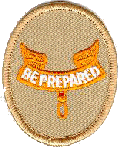 Scout
Scout
A change was made to requirement 5. In addition, gender neutrality changes were made to requirements 1c, 2, 2b, and 2c, plus the changes to two notes as described above. The requirement changes are as follows:
- Demonstrate the Boy Scout sign, salute, and handshake. Explain when they should be used.
- After attending at least one Boy Scout troop meeting, do the following:
- Describe the four steps of Boy Scout advancement.
- Describe what the Boy Scout Scouts BSA ranks are and how they are earned.
- Demonstrate your knowledge of Tell what you need to know about pocketknife safety.
 Second
Class
Second
Class
A small change was made to requirement 8e, and a gender neutrality change was made to requirement 1a, plus the changes to two notes as described above. The requirement changes are as follows:
- Since joining Boy Scouts BSA, participate in five separate troop/patrol activities, at least three of which must be held outdoors. Of the outdoor activities, at least two must include overnight camping. These activities do not include troop or patrol meetings. On campouts, spend the night in a tent that you pitch or other structure that you help erect, such as a lean-to, snow cave, or tepee.
- Participate in two hours of service through one or more service projects approved by your Scoutmaster. Explain Tell how your service to others relates to the Scout Oath.
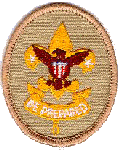 First
Class
First
Class
Gender neutrality changes were made to requirements 1a, 2b, and 10, plus the changes to two notes as described above. The requirement changes are as follows:
- Since joining Boy Scouts Scouts BSA, participate in 10 separate troop/patrol activities, at least six of which must be held outdoors. Of the outdoor activities, at least three must include overnight camping. These activities do not include troop or patrol meetings. On campouts, spend the night in a tent that you pitch or other structure that you help erect, such as a lean-to, snow cave, or tepee
- Using the menu planned in First Class requirement 2a, make a list showing a budget and the food amounts needed to feed three or more boys youth. Secure the ingredients.
- Tell someone who is eligible to join Boy Scouts Scouts BSA, or an inactive Boy Scout, about your Scouting activities. Invite him this person to an outing, activity, service project or meeting. Tell him Provide information on how to join, or encourage the inactive Boy Scout to become active. Share your efforts with your Scoutmaster or other adult leader.
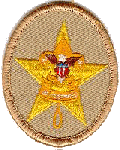 Star
Star
A gender neutrality change was made to Requirement 5 and a change was made to footnote 6, plus the changes to a note as described above. The requirement and footnote changes are as follows:
- While a First Class Scout, serve actively in your troop for four months in one or more of the following positions of responsibility (or carry out a Scoutmaster assigned leadership project to help the troop):
Boy Scout troop.
- Patrol leader,
- assistant senior patrol leader,
- senior patrol leader,
- troop guide,
- Order of the Arrow troop representative,
- den chief,
- scribe,
- librarian,
- historian,
- quartermaster,
- bugler,
- junior assistant Scoutmaster,
- chaplain aide,
- instructor,
- webmaster, or
- outdoor ethics guide 6
Venturing crew
- President,
- vice president,
- secretary,
- treasurer,
- den chief,
- historian,
- guide,
- quartermaster,
- chaplain aide, or
- outdoor ethics guide
Sea Scout ship.
- boatswain,
- boatswain's mate,
- purser,
- yeoman,
- storekeeper, or
- crew leader,
- media specialist,
- specialist,
- den chief, or
- chaplain aide.
Lone Scout.
Leadership responsibility in your school, religious organization, club, or elsewhere in your community.6 Assistant patrol leader is not an approved position of responsibility for the Star, Life, or Eagle rank.
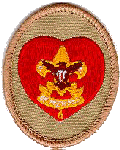 Life
Life
Gender neutrality changes were made to Requirements 5 and 6, plus the changes to a notes as described above. The requirement changes are as follows:
- While a Star Scout, serve actively in your troop for six months in one or more of the following positions of responsibility (or carry out a unit leader-assigned leadership project to help the troop):
Boy Scout troop.
- Patrol leader,
- assistant senior patrol leader,
- senior patrol leader,
- troop guide,
- Order of the Arrow troop representative,
- den chief,
- scribe,
- librarian,
- historian,
- quartermaster,
- bugler,
- junior assistant Scoutmaster,
- chaplain aide,
- instructor,
- webmaster, or
- outdoor ethics guide 9
Venturing crew
- President,
- vice president,
- secretary,
- treasurer,
- den chief,
- historian,
- guide,
- quartermaster,
- chaplain aide, or
- outdoor ethics guide
Sea Scout ship.
- boatswain,
- boatswain's mate,
- purser,
- yeoman,
- storekeeper, or
- crew leader,
- media specialist,
- specialist,
- den chief, or
- chaplain aide.
Lone Scout.
Leadership responsibility in your school, religious organization, club, or elsewhere in your community.- While a Star Scout, use the Teaching EDGE method to teach another Scout (preferably younger than you) the skills from ONE of the following choices, so that he the Scout is prepared to pass those requirements to his their Scoutmaster's satisfaction.
- Tenderfoot - 4a and 4b (first aid)
- Second Class - 2b, 2c, and 2d (cooking/camping)
- Second Class - 3a and 3d (navigation)
- First Class - 3a, 3b, 3c, and 3d (tools)
- First Class - 4a and 4b (navigation)
- Second Class - 6a and 6b (first aid)
- First Class - 7a and 7b (first aid)
- Three requirements from one of the required Eagle merit badges, as approved by your Scoutmaster.
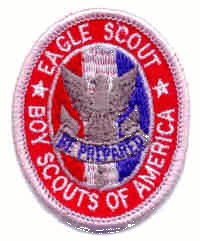 Eagle
Scout
Eagle
Scout
Gender neutrality changes were made to Requirements 4 and Footnotes 12 and 13, plus the changes to a note as described above. The requirement and numbered footnote changes are as follows:
- While a Life Scout, serve actively in your troop for six months in one or more of the following positions of responsibility: 9
Boy Scout troop.
- Patrol leader,
- assistant senior patrol leader,
- senior patrol leader,
- troop guide,
- Order of the Arrow troop representative,
- den chief,
- scribe,
- librarian,
- historian,
- quartermaster,
- junior assistant Scoutmaster,
- chaplain aide,
- instructor,
- webmaster, or
- outdoor ethics guide 11
Venturing crew
- President,
- vice president,
- secretary,
- treasurer,
- den chief,
- historian,
- guide,
- quartermaster,
- chaplain aide, or
- outdoor ethics guide
Sea Scout ship.
- boatswain,
- boatswain's mate,
- purser,
- yeoman,
- storekeeper, or
- crew leader,
- media specialist,
- specialist,
- den chief, or
- chaplain aide.
Lone Scout.
Leadership responsibility in your school, religious organization, club, or elsewhere in your community.12 APPEALS & EXTENSIONS
If a Scout believes he has completed all requirements for the Eagle Scout rank, but is denied a board of review, he have been completed but a board of review is denied, the Scout may request a board of review under disputed circumstances in accordance with Guide to Advancement, topic 8.0.3.2.
If the board of review does not approve the Scout's advancement, the decision may be appealed in accordance with Guide to Advancement, topic 8.0.4.0.
If a Scout A Scout who foresees that, due to no fault or choice of his their own, he it will be unable not be possible to complete the Eagle Scout rank requirements before age 18, he may apply for a limited time extension in accordance with Guide to Advancement topic 9.0.4.0. Time extensions are rarely granted. These are rarely granted and reserved only for work on Eagle.
13 AGE REQUIREMENT ELIGIBILITY.
Merit badges, badges of rank, and Eagle Palms may be earned by a registered Boy Scout or a qualified Venturer or Sea Scout. He Scouts may earn these awards until his their 18th birthday. Any Venturer or Sea Scout who has achieved the First Class rank as a Boy Scout in a troop or as a Lone Scout may continue working up to his their 18th birthday toward the Star, Life, and Eagle Scout ranks and Eagle Palms.
An Eagle Scout board of review may occur, without special approval, within three months after the 18th birthday. Local councils must preapprove those held three to six months afterward. To initiate approval, the candidate, his the candidate's parent or guardian, the unit leader, or a unit committee member attaches to the application a statement explaining the delay. Consult the Guide to Advancement, topic 8.0.3.1, in the case where a board of review is to be conducted more than six months after a candidate's 18th birthday.
If yon have a permanent physical or mental disability, or a disability expected to last more than two years or beyond age 18, you may become an Eagle Scout by qualifying for as many required merit badges as you can and qualifying for alternative merit badges for the rest. If yon seek to become an Eagle Scout under this procedure, you must submit a special application to your local council service center. Your application must be approved by your council advancement committee before you can work on alternative merit badges.
A Scout. Venturer, or Sea Scout with a disability may also qualify to work toward rank advancement after he is reaching 18 years of age if he meets the guidelines outlined in section 10 of the Guide to Advancement are met.
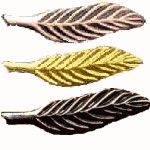 Eagle
Palms
Eagle
Palms
Changes were made to the introductory paragraph, and Gender neutrality changes were made to Footnote 16, plus the changes to a note as described above. The changes are as follows:
After successfully completing your Eagle Scout board of review on or after Aug. 1, 2017, and being validated as an Eagle Scout by the National Service Center, you will be entitled to receive an Eagle Palm for each additional five merit badges you completed before your Eagle board of review beyond those required for Eagle. All In addition, all current Scouts who have completed their Eagle board of review and who had not passed their 18th birthday before Aug. 1, 2017, are also entitled as well to receive Eagle Palms. For these Palms only, it will not be necessary for you to complete the requirements stated below.
16 Merit Badges earned any time since becoming a Boy Scout joining Scouts BSA may be used to meet this requirement.
Introduction to Merit Badges
Changes were made to this topic, the changes were as follows:
jYou can learn about sports, crafts, science, trades, business, and future careers as you earn merit badges. Tltere are more than 100 merit badges, and any Boy Scout or any qualified Venturer or Sea Scout may earn any of these at any time (see page 5).
Pick a Subject. Talk to your unit leader about your interests. Read the requirements of the merit badges you think might interest you, and pick one to earn. Your leader will give you the name of a person from a list of counselors. These individuals have special knowledge in their merit badge subjects and are interested In helping you.
Scout Buddy System. You must have another person with you at each meeting with tlie merit badge counselor. This person can be another Scout, your parents or guardian, a brother or sister, a relative, or a friend. must be either another registered adult or the parent/guardian of the Scout.
Call the Merit Badge Counselor. Get a signed Application for Merit Badge, No. 34124, from your unit leader. Get in touch with the merit badge counselor and explain that you want to earn the badge. The counselor may ask to meet you to explain what Is expected and to start helping you meet the requirements. You should also discuss work you have already started or possibly completed.
At the first meeting, you and your merit badge counselor will review and may start working on the requirements. In some cases, you may share the work you have already started or completed.
Unless otherwise specified, work on a requirement can be started at any time. Ask your counselor to help you leam the things you need to know or do. You should read the merit badge pamphlet on the subject. Many troops, schools, and public libraries have them. (See the list on the inside back cover.)
Show Your Stuff. When you are ready, call the counselor again lo make an appointment. When you go, take along the things you have made to meet the requirements. If they are too big to move, take pictures or have an adult tell in writing what you have done. The counselor will test you on each requirement to make sure you know your stuff and have done or can do the things required.
Get the Badge. When the counselor is satisfied you have met each requirement, he or she will sign your application. Give the signed application to your unit leader so your merit badge emblem can be secured for you.
Requirements. You are expected to meet the requirements as they are stated—no more and no less. You must do exactly what is stated in the requirements. If it says "show or demonstrate," that is what you must do. Just telling about it isn't enough. The same thing holds true for such words as "make," "list," "in the field," and "collect," "identify," and "label."
The requirements listed in this book are the official requirements of the Boy Scouts of America. However, the requirements on the following pages might not match those in the Boy Scout Handbook Scouts BSA handbooks and the merit badge pamphlets, because this publication is updated only on an annual basis.
Once a Scout begins work he the Scout may continue using the requirements he they started with until completion of the badge. Alternatively, he they may choose to switch to the revised requirements. Sometimes, however - especially for more significant changes - the Boy Scout Handbook Scouts BSA handbooks, theBoy Scout Scouts BSA Requirements book, www.scouting.org/meritbadges, or official communications from the National Council may set forth a different procedure that must be used. The National Council may establish a new date for when use of the existing requirements must cease.
There is no time limit for starting and completing a merit badge, but all work must be completed when a Scout turns 18.
REVISED Merit Badges
 American
Business
American
Business
Requirements 1 and 2 were changed and requirements 3-6 were completely replaced. The changes are as follows:
- Do the following:
- Explain four features of the free enterprise system in the United States. Tell its benefits and responsibilities. Describe the difference between freedom and license. Tell how the Scout Oath and Law apply to business and free enterprise.
- Describe the Industrial Revolution. Tell and tell about the major developments that marked the start of the modern industrial era in the United States. Tell about five Discuss three people who had a great influence on business or industry in the United States. Tell and describe what each did.
- Identify and describe to your counselor the five primary areas of business.
- Explain the history of labor unions in the United Slates and the importance of labor unions and employers working together. Identify two major labor unions currently in existence.
- Discuss with your counselor how business impacts the local, national, and global economy.
- Do the following:
- Visit a bank or credit union. Talk with one of the officers or staff. Chart the organization of the financial institution. Show its relationship with other banks, business and industry.
Explain the three basic types of financial statements (income statement, balance sheet, and statement of cash flows). Discuss with your counselor how each statement can help business leaders make better decisions.- Explain how changes in interest rates, taxes, and government spending affect the flow of money into or out of business and industry.
c. Describe to your counselor green marketing and sustainable business practices.- d. Explain how a sole proprietorship or partnership gets its capital. Discuss and explain four ways a corporation gets its obtains capital.
e. Explain the place of profit in business.- f. Name five kinds of insurance useful to business. Describe their purposes.
- Do the following:
- Pick two or more stocks from the financial pages of a newspaper. Request the annual report or prospectus from one of the companies by writing, or visit its website (with your parent’s permission) to view the annual report online. Explain how a company’s annual report and prospectus can be used to help you manage your investments.
Explain the place of profit in business.- Pretend to have bought $1,000 worth of the stocks from the company you wrote to in requirement 3a. Explain how you "bought" the stocks. Tell why you decided to "buy" stock in this company. Keep a weekly record for three months of the market value of your stocks. Show any dividends declared.
Describe to your counselor green marketing and sustainable business practices.- Explain how ethics plays a role in business decision making.
- Discuss the differences between operating a brick-and-mortar business versus an online business.
- Do ONE of the following:
Describe the role of the U.S. Department of Labor. Discuss two of the following topics with your counselor:
- Draw an organizational chart of a typical central labor council.
Fair Labor Standards Act (FLSA)- Describe automation, union shop, open shop, collective-bargaining agreements, shop steward, business agent, and union counselor.
Occupational Safety and Health Act (OSHA)- Explain the part played by four federal or state agencies in labor relations.
Family and Medical Leave Act (FMLA)- Employee Retirement Income Security Act (ERISA)
- Run a small business involving a product or service for at least three months. First find out the need for it. For example: a newspaper route, lawn mowing, sales of things you have made or grown. Keep records showing the costs, income, and profit or loss.
Choose a business and research how it applies each of the primary areas of business (accounting, finance, economics, marketing, and management). Share what you have learned with your counselor.
Report:
a. How service, friendliness, hard work, and salesmanship helped build your business.
b, The benefits you and others received because you were in business.
Comparable 4-H, FFA, or Junior Achievement projects may be used for requirement 5.- Do ONE of the following:
- Make an oral presentation to your Scout troop about an e-commerce company. Tell about the benefits and pitfalls of doing business online, and explain the differences between a retailer and an e-commerce company. In your presentation, explain the similarities a retailer and an e-commerce company might share.
Choose one of the primary areas of business and identify three career opportunities. Select one and research the education, training, and experience required for this career. Discuss this with your counselor and explain why this interests you.- Choose three products from your loc al grocery store or mall and tell your merit badge counselor how the packaging could be improved upon so that it has less impact on the environment.
Select a business leader and interview this individual to learn more about his or her company and career path. Discuss the role ethics plays in making business decisions. Share what you have learned with your counselor.
c. Gather information from news sources and books about a current business leader. Write a two-page biography about this person or make a short presentation to your counselor. Focus on how this person became a successful business leader.
 American
Labor
American
Labor
A change was made to requirement 1. The change was as follows:
- Using resources available to you, learn about working people and work-related concerns. List and briefly describe or give examples of at least EIGHT concerns of American workers. These may include, but are not limited to, working conditions, workplace safety, hours, wages, seniority, job security, equal opportunity employment and discrimination, guest workers, automation and technologies that replace workers, unemployment, layoffs, outsourcing, and employee benefits such as health care, child care, profit sharing, continuing education, and retirement benefits.
 Archery
Archery
Changes were made to requirements 1c, 3b, 5-Option A-f1d and f3, and 5-Option B-f1d and f3, and requirement 4f was deleted. The changes are as follows:
- Tell about your local and state laws for owning and using archery tackle equipment.
- Explain the following terms: cast, draw weight, string height (fistmele), aiming, spine, mechanical release, freestyle, and barebow.
- The elimination system used in Olympic archery competition.
- OPTION A
- An FITA A World Archery/USA Archery indoor round I and make a score of 80 points.
- As a member of the NAA's USA Archery Junior Olympic Archery Development Program (JOAD), achieve the level of green, purple, and gray stars as part of a JOAD Club indoor or outdoor season with your chosen style of archery equipment. earn your indoor or outdoor green, purple, and gray achievement award pins using a recurve bow or longbow.
- OPTION B
- An FITA A World Archery/USA Archery indoor round I and make a score of 90 points.
- As a member of the NAA's USA Archery Junior Olympic Archery Development Program (JOAD), achieve the level of green, purple, and gray stars as part of a JOAD Club indoor or outdoor season with your chosen style of archery equipment earn your indoor or outdoor green, purple, and gray achievement award pins using a compound bow..
 Bird
Study
Bird
Study
Changes were made to requirements 1, 3, and 3a, new requirements 3d, 6, 10, and 11 were added, and requirements 6-8 were renumbered as 7-9. The changes are as follows:
- Explain the need for bird study and why birds are useful indicators of the quality of the environment. Describe how birds are part of the ecosystem.
- Demonstrate that you know how to properly use and care for binoculars, a spotting scope, or a monocular.
- Explain what the specification numbers on the binoculars mean. mean on binoculars, a spotting scope, or a monocular.
- Describe when and where each type of viewing device would be most effective.
- Describe to your counselor how certain orders of birds are uniquely adapted to a specific habitat. In your description, include characteristics such as the size and shape of the following:
- Beak
- Body
- Leg and foot
- Feathers/plumage
- 6. Explain the function of a bird's song. Be able to identify five of the 20 species in your field notebook by song or call alone. For each of these five species enter a description of the song or call, and note the behavior of the bird making the sound. Note why you think the bird was making the call or song that you heard.
- 7. Do ONE of the following:
- 8. Do ONE of the following. For the option you choose, describe what birds you hope to attract, and why.
- Build a bird feeder and put it in an appropriate place in your yard or another location.
- Build a birdbath and put it in an appropriate place.
- Build a backyard sanctuary for birds by planting trees and shrubs for food and cover.
- Do the following:
- Explain the differences between extinct, endangered, and threatened.
- Identify a bird species that is on the endangered or threatened list. Explain what caused their decline. Discuss with your counselor what can be done to reverse this trend and what can be done to help remove the species from the endangered or threatened list.
- Identify three career opportunities connected to the study of birds. Pick one and find out the education, training, and experience required for this profession. Discuss with your counselor if this profession might interest you.
 Communication
Communication
Gender neutrality changes were made to requirement 1c, and a change was made to requirement 1d. The changes are shown below.
- In a small-group setting, meet with other scouts or with friends. Have them share personal stories about significant events in their lives that affected them in some way. Take note of how each scout participates in the group discussion and how effectively he each Scout communicates his their story. Report what you have learned to your counselor about the differences you observed in effective communication.
- List as many ways as you can think of to communicate with others (face-to-face, by telephone, letter, e-mail, text messages, social media, and so on). For each type of communication discuss with your counselor an instance when that method might not be appropriate or effective.
 Disabilities
Awareness
Disabilities
Awareness
A gender neutrality change was made to requirement 3a as shown below. This change was not noted in the listing on the inside front cover.
- Talk with a Scout who has a disability and learn about his the Scout's experiences taking part in Scouting activities and earning different merit badges. Discuss what you have learned with your counselor.
 Family
Life
Family
Life
Changes were made to requirement 7 as shown below. These changes were not noted in the listing on the inside front cover.
- Discuss the following with your counselor:
Discuss with your counselor your understanding of what makes an effective parent and why, and your thoughts on the parent's role and responsibilities in the family.
- a. Your understanding of what makes an effective father and why, and your thoughts on the father's role in the family
- b. Your understanding of the responsibilities of a parent.
 First
Aid
First
Aid
Chaanges were made to requirements 1, 5, and 8. The changes are as follows:
- Satisfy Demonstrate to your counselor that you have current knowledge of all first aid requirements for Tenderfoot, Second Class, and First Class ranks.
- Prepare a first-aid kit for your home. Display and discuss its contents with your counselor.
Do the following:
- Prepare a first-aid kit for your home. Display and discuss its contents with your counselor.
- With an adult leader. Inspect your troop's first-aid kit. Evaluate it for completeness. Report your findings to your counselor and Scout leader.
- Show the steps that need to be taken for someone suffering from a severe cut on the leg and on the wrist. Tell the dangers in the use of a tourniquet and the conditions under which its use is justified.
Do the following:
- Show the steps that need to be taken for someone who has a large open wound or cut that is not bleeding severely.
- Show the steps that need to be taken for someone who has a large open wound or cut that is severely bleeding.
- Tell the dangers in the use of a tourniquet and the conditions under which its use is justified.
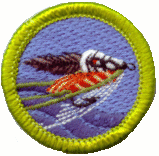 Fly
Fishing
Fly
Fishing
Changes were made to requirements 3 and 9. Requirement 10 was split into requirements 10 and 11 with some wording added to requirement 11. The changes were as follows:
- Demonstrate how to tie proper knots to prepare a fly rod for fishing:
- Tie a backing to the arbor of a fly reel spool using the an arbor knot
- Attach Tie backing to the fly line using the a nail knot
- Attach a leader to the fly line using the needle knot a nail knot, or a loop-to-loop connection
- Add a tippet to a leader using a surgeon's knot or a loop-to-loop connection or blood knot
- Tie a fly onto the terminal end of the leader using the an improved clinch knot
- Discuss what good outdoor sportsmanlike behavior is and how it relates to anglers. Tell how the Outdoor Code of the Boy Scouts of America relates to a fishing enthusiast, including the aspects of littering, trespassing, courteous behavior, and obeying fishing regulations.
- Catch at least one fish. If regulations and health concerns permit, clean and cook a fish you have caught. Otherwise, acquire a fish and cook it.
- If regulations and health concerns permit, clean and cook a fish you have caught. Otherwise, acquire a fish and cook it. (You do not need to eat your fish.)
 Forestry
Forestry
Requirement 2c was revised as shown below:
- Find and examine two types of animal, insect, or disease damage on to trees. In the field notebook you prepared for requirement 1, identify the damage, explain how the damage was caused, and describe the effects of the damage on the trees. Photograph or sketch each example.
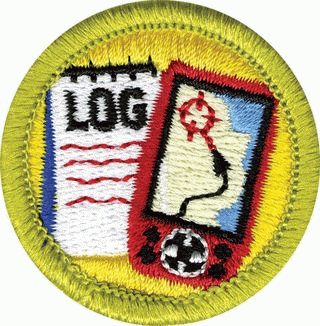 Geocaching
Geocaching
Requirements 5c and 5d were removed, and requirements 7 and 8c were revised. The changes are shown below.
- Explain the UTM (Universal Transverse Mercator) system and how it differs from the latitude/longitude system used for public geocaches.
- Show how to plot a UTM waypoint on a map. Compare the accuracy to that found with a GPS unit.
- With your parent's permission*, go to www.geocaching.com. Type in your zip code city and state to locate public geocaches in your area. Share the posted information about three of those geocaches with your counselor. Then, pick one of the three and find the cache.
*To fulfill this requirement, you will need to set up a free user account with www.geocaching.com. Ask your parent for permission and help before you do so.
- Set up and hide a public geocache, following the guidelines in the Geocaching merit badge pamphlet. Before doing so, share with your counselor a six three-month maintenance plan for the geocache where you are personally responsible for the first those three months. After setting up the geocache, with your parent's permission, follow the logs online for 30 days and share them with your counselor. You must archive the geocache when you are no longer maintaining it.
 Golf
Golf
Requirements 1 and 7b were revised, as shown below.
- Discuss safety on the golf course. Show that you know first aid for injuries or illnesses that could occur while golfing, including lightning, heat reactions, dehydration, blisters, sprains, and strains.
- The full wood shot, Driver played from a tee.
 Law
Law
Requirement 11d was revised as shown below.
- Space travel and satellites orbiting the earth Immigration
 Lifesaving
Lifesaving
Changes were made to requirements 1a (Second Class 5c and 5d), and gender neutrality changes were made to requirements 11, and 13. The changes are as follows:
- Second Class
- (5c) Demonstrate water rescue methods by reaching with your arm or leg, by reaching with a suitable object, and by throwing lines and objects. Explain why swimming rescues should not be attempted when a reaching or throwing rescue is possible.
- (5d) Explain why swimming rescues should not be attempted when a reaching or throwing rescue is possible. Explain why and how a rescue swimmer should avoid contact with the victim.
- Perform the following nonequipment rescues for a conscious practice subject 30 feet from shore. Begin in the water from a position near the subject. Speak to the subject to determine his or her condition and to provide instructions and encouragement.
- Perform the following rescues for an unconscious practice subject at or near the surface 30 feet from shore. Use a proper entry and strong approach stroke. Speak to the subject and splash water on him the subject to determine his or her condition before making contact. Quickly remove the victim from the water, with assistance if needed, and position for CPR.
 Motorboating
Motorboating
Requirements 4h and 4i were added, changes were made to requirements 5, 5e, 5f. and 5g, and requirement 6 was deleted. The changes are shown below:
- Explain the use of lights (sight signals) and sound signals on motorboats.
- Discuss the common types of anchors used in motorboating and under what conditions each would be preferred. Explain proper anchoring techniques.
- Demonstrate With your counselor or other adults on board, demonstrate proper boat-handling procedures and skills by doing the following:
6. Point out and explain the mechanical and safety features of a boat trailer.
- Stop and secure the boat in position on the open water using anchors; get under way . Raise and stow the anchor and get underway.
- Land or dock; get out and assist others. the boat, disembark, and assist others in doing the same.
- Moor, dock, or beach the boat and secure all gear.
- a. Launch a boat from a trailer.
- b. Remove a boat from the water using a trailer.
 Personal
Management
Personal
Management
Changes were made to requirements 2a, 2b1, 2b2, 4c, 4d, 8d, 10a and 10b. Requirement 5 was deleted. Requirement 6 was revised and renumbered as 5. New requirements were added as 2b3, 2b4, 4d, 4e, and 6. The changes are as follows:
- Prepare a budget reflecting your expected income (allowance, gifts, wages), expenses, and savings. Track and record your actual income, expenses, and savings for 13 consecutive weeks. (You may use the forms provided in the merit badge pamphlet, devise your own, or use a computer generated version.) When complete, present the records showing the results to your merit badge counselor. for a period of 13 consecutive weeks.
- If expenses exceed budget income, determine steps to balance your budget.
- If income exceeds budget expenses, state how you would use the excess money (new goal, savings).
- Track and record your actual income, expenses, and savings for 13 consecutive weeks (the same 13-week period for which you budgeted). (You may use the forms provided in this pamphlet, devise your own, or use a computer-generated version.) When complete, present the records showing the results to your merit badge counselor.
- Compare your budget with your actual income and expenses to under- stand when your budget worked and when it did not work. With your merit badge counselor, discuss what you might do differently the next time.
- The concepts of return on investment and risk and how they are related.
- The concepts of simple interest and compound interest and how these affected the results of your investment exercise.
- The concept of diversification in investing.
- Why it is important to save and invest for retirement.
- Select five publicly traded stocks. Explain to your merit badge counselor the importance of the following information for each stock:
6. Pretend you have $1,000 to save, invest, and help prepare yourself for the future. Explain to your merit badge counselor the advantages or disadvantages of saving or investing in each of the following:
- a. Current price
- b, How much the price changed from the previous day
- c. The 52-week high and the 52-week low prices
Explain to your merit badge counselor what the following investments are and how each works:
- Common stocks
- Mutual funds
- Life insurance
- A certificate of deposit (CD)
- A savings account or U.S. savings bond
- A U.S. savings bond
- Explain to your counselor why people might purchase the following types of insurance and how they work:
- Automobile
- Health
- Homeowner's/renter's
- Whole life and term life
- Review With your merit badge counselor, review your "to do" list, one-week schedule, and diary/journal to understand when your schedule worked and when it did not work. With your merit badge counselor, discuss and understand what you learned from this requirement and Discuss what you might do differently the next time.
- Choose a career you might want to enter after high school or college graduation. Discuss with your counselor the needed qualifications, education, skills, and experience.
- Research your anticipated career and discuss with your merit badge counselor what you have learned about qualifications such as education, skills, and experience.
Explain to your counselor what the associated costs might be to pursue this career, such as tuition, school or training supplies, and room and board. Explain how you could prepare for these costs and how you might make up for any shortfall.
 Railroading
Railroading
A new Requirement 8a8 was added. The new requirement is shown below:
- Explain the difference between powering and controlling a model railroad by using direct current, and powering and controlling a model railroad using digital command control.
 Reptile
and Amphibian Study
Reptile
and Amphibian Study
Requirements 8a and 8b were revised as shown below.
- Maintain one or more reptiles or amphibians for at least a month. Record food accepted, eating methods, changes in coloration, shedding of skins, and general habits; or keep the eggs of a reptile from the time of laying until hatching; or keep the eggs of an amphibian from the time of laying until their transformation into tadpoles (frogs) or larvae (salamanders). Whichever you chose, keep records of and report to your counselor how you cared for your animal/eggs/larvae to include lighting, habitat, temperature and humidity maintenance, and any veterinary care requirements.
- Choose a reptile or amphibian that you can observe at a local zoo, aquarium, nature center, or other such exhibit (such as your classroom or school). Study the specimen weekly for a period of three months. At each visit, sketch the specimen in its captive habitat and note any changes in its coloration, shedding of skins, and general habits and behavior. Discuss with your counselor how the animal you observed was cared for to include its housing and habitat, how the lighting, temperature, and humidity were maintained, and any veterinary care requirements.
Find out, either from information you locate on your own or by talking to the caretaker, what this species eats and what are its native habitat and home range, preferred climate, average life expectancy, and natural predators. Also identify any human caused threats to its population and any laws that protect the species and its habitat. After the observation period, share what you have learned with your counselor.
 Rifle
Shooting
Rifle
Shooting
Changes were made to requirements 1f, 2-OPTION C-b, and 2-OPTION C-h. The changes are shown below:
- Successfully complete a state hunter education course or obtain Obtain a copy of the hunting laws for your state, then do the following: . Explain the main points of hunting laws in your state and give any special laws on the use of guns or ammunition.
- Explain the main points of hunting laws in your state and give any special laws on the use of guns and ammunition.
- List the kinds of wildlife that can be legally hunted in your state.
- OPTION C
- Identify principal parts of percussion and flintlock rifles and discuss how they function.
- Demonstrate the knowledge, skills, and attitude necessary to safely shoot a muzzle-loading rifle on a range, including range procedures. Explain what a misfire, hangfire, and squib fire are, and explain the procedures to follow in response to each.
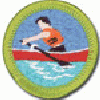 Rowing
Rowing
A change was made to the text of requirement 2, and a gender neutrality change was made to requirement 7, as shown below.
- Before doing the following requirements, successfully complete the BSA swimmer test. Jump feet first into water over your head in depth. Level off and swim 75 yards in a strong manner using one or more of the following strokes: sidestroke, breaststroke, trudgen, or crawl; then swim 25 yards using an easy, resting backstroke. The 100 yards must be completed in one swim without stops and must include at least one sharp turn. After completing the swim, rest by floating.
- Alone in a rowboat, push off from the shore or a pier. Row 20 yards to a swimmer. While giving instructions to the swimmer, pivot the boat so that the swimmer can hold on to the stern. Tow him the swimmer to shore.
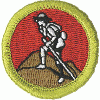 Scouting
Heritage
Scouting
Heritage
Changes were made to requirement 2, including addition of a sixth name to the list of choices. The changes are shown below.
- Give a short biographical summary of any TWO of the following, and tell of their roles in how Scouting developed and grew in the United States prior to 1940.
- Daniel Carter Beard
- William D. Boyce
- Waite Phillips
- Ernest Thompson Seton
- James E. West
- "Green Bar Bill" Hillcourt
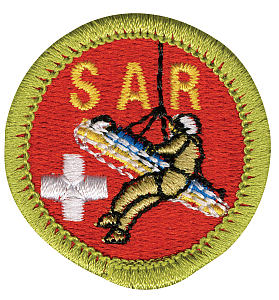 Search
and Rescue
Search
and Rescue
A change was made to the note about unauthorized and restricted activities. This change was not noted in the listing on the inside front cover.
A Note About Unauthorized and Restricted Activities
The BSA's Guide to Safe Scouting states under "Unauthorized and Restricted Activities" that flying in aircraft as part of a search and rescue mission is an unauthorized activity for youth members. For complete information, see http://www.scouting.org/scoutsource/HealthandSafety.aspx http://www.scouting.org/healthandsafety.
 Soil
and Water Conservation
Soil
and Water Conservation
A new requirement 4e was added in 2017 but omitted from the 2018 edition of Boy Scout Requirements. It has been included in the 2019 edition of Scouts BSA Requirements, and is shown below.
- Explain what an aquifer is and why it can be important to communities.
Note that, in addition to this change, we have found a number of differences between the requirements in the Soil and Water Conservation merit badge pamphlet and the 2019 edition of Scouts BSA Requirements. Click here to see those differences.
 Theater
Theater
Gender neutrality changes were made to requirement 4d. These changes were not noted in the listing on the inside front cover.
- You are at a camp with a new Scout. You try to help him them pass a cooking test. He The Scout learns very slowly.
 Welding
Welding
Changes were made to requirement 2a, as shown below. These changes were not noted in the listing on the inside front cover.
- With your counselor, discuss general safety precautions and Material Safety Data Sheets related to welding. Explain the importance of the MSDS SDS.
 Woodwork
Woodwork
Changes were made to requirement 5, Requirement 6a was revised and split into 6a, 6b, and 6c. Requirement 6b was renumbered as 6d and 66c was renumbered as 6e and revised. The revisions are shown below.shown below.
- Create your own carpentry project. List woodworking project. Begin by making working drawings, list the materials you will need to complete your project, and then build your project. Keep track of the time you spend and the cot of the materials.
- Do any TWO of the following:
- Make working drawings of a project needing (1) beveled or rounded edges OR curved or incised cuttings, OR (2) miter, dowel, or mortise and tenon joints. Build this project. and build it.
- Make working drawings of a project needing curved or incised cuttings and build it.
- Make working drawings of a project needing miter, dowel, or mortise and tenon joints and build it.
- b. Make a cabinet, box, or something else with a door or lid fastened with inset hinges.
- c. Help make and repair wooden toys for underprivileged children OR help carry out a carpentry woodworking service project approved by your counselor for a charitable organization.
Merit Badges with differences between
the current merit badge pamphlet
and the 2019 Scouts BSA Requirements book
In the following discussions, text that appears in the Scouts BSA Requirements book, which has been replaced or deleted in the merit badge pamphlet, is shown in red italic lettering, while the replacement or new text that appears in the merit badge pamphlets is shown in large Green lettering.
 Camping
Camping
The wording of requirement 9b1 in the Camping merit badge pamphlet is different than the wording in Scouts BSA Requirements.
The wording of this requirement, as it appears in the 2016 edition of the Camping merit badge pamphlet is as follows:
- Hike up a mountain where, at some point, you are at least 1,000 feet higher in elevation from where you started.
The wording of this requirement, as it appears in Scouts BSA Requirements is as follows:
- Hike up a mountain, gaining at least 1,000 vertical feet.
 Fire
Safety
Fire
Safety
In the 2016 edition of the Fire Safety merit badge
pamphlet, what was formerly requirement 3 was renumbered as 3a, and the
text of a new requirement was added as 3b.
The changes adding this new requirement as they appear in the 2016 edition
of the Fire Safety merit badge pamphlet are as follows:
- Do the following:
- Name the most frequent causes of fire in the home and give examples of ways they can be prevented. Include a discussion about fires caused by smoking in the home, cooking, candles, fireplaces, and electrical appliances.
- Determine if smoke detectors are required in all dwellings within your municipality. If so, explain which specific types are required. Tell your counselor what type of smoke detectors your house has or needs.
- Choose a fire safety-related career that interests you and describe the level of education required and responsibilities of a person in that position. Tell why this position interests you.
In the Scouts BSA Requirementsi book, the
new text appears as requirement 12, and the previous requirement 12 is numbered
as 13.
The changes to the requirements (as they appear in the Scouts BSA Requirements
book) are as follows:
- Name the most frequent causes of fire in the home and give examples of ways they can be prevented. Include a discussion about fires caused by smoking in the home, cooking, candles, fireplaces, and electrical appliances.
- Determine if smoke detectors are required in all dwellings within your municipality. If so, explain which specific types are required. Tell your counselor what type of smoke detectors your house has or needs.
- 12. Choose a fire safety-related career that interests you and describe the level of education required and responsibilities of a person in that position. Tell why this position interests you.
 Fish
and Wildlife Management
Fish
and Wildlife Management
The last sentence of requirement 7c has read "You may visit ..." in the Fish and Wildlife Management merit badge pamphlet, and "You must visit ..." in the Boy Scout Requirements and Scouts BSA Requirements books since it was added in 2004.
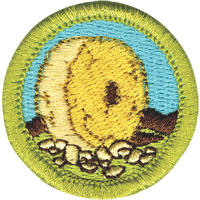 Inventing
Inventing
The wording of requirement 4 in the Inventing merit badge pamphlet is different than the wording in Scouts BSA Requirements.
The wording of this requirement, as it appears in the 2016 edition of the Inventing merit badge pamphlet is as follows:
- Discuss with your counselor the types of inventions that are appropriate to share with others without protecting and explain why. Tell your counselor about one unpatented invention and its impact on society.
The wording of this requirement, as it appears in Scouts BSA Requirements is as follows:
- Discuss with your counselor the types of inventions that are appropriate to share with others without protecting and explain why. Tell your counselor about one nonpatented or noncopyrighted invention and its impact on society.
 Personal
Fitness
Personal
Fitness
When a new Personal Fitness merit badge pamphlet was issued in 2013, it contained information on a "Body Composition Evaluation" which was to replace the former "Body Composition Test", and new wording for requirements 6 and 8. Since then, the Requirements bookx haves had different wording (unchanged from the earlier requirements) for requirements 6 and 8 than what appears in the merit badge pamphlet.
The wording of requirements 6 and 8 in the Personal Fitness merit badge pamphlet is as follows:
- Before doing requirements 7 and 8, complete the aerobic fitness, flexibility, and muscular strength tests, along with the body composition evaluation as described in the Personal Fitness merit badge pamphlet. Record your results and identify those areas where you feel you need to improve.
- Complete the physical fitness program you outlined in requirement 7. Keep a log of your fitness program activity (how long you exercised; how far you ran, swam, or biked; how many exercise repetitions you completed; your exercise heart rate; etc.). Repeat the aerobic fitness, muscular strength, and flexibility tests every two weeks and record your results. After the 12th week, repeat all of the required activities in each of the three test categories, record your results, and show improvement in each one. For the body composition evaluation, compare and analyze your preprogram and postprogram body composition measurements. Discuss the meaning and benefit of your experience, and describe your long-term plans regarding your personal fitness.
The wording of requirements 6 and 8 in the Scouts BSA Requirements book is as follows:
- Before doing requirements 7 and 8, complete the aerobic fitness, flexibility, muscular strength, and body composition tests as described in the Personal Fitness merit badge pamphlet. Record your results and identify those areas where you feel you need to improve.
- Complete the physical fitness program you outlined in requirement 7. Keep a log of your fitness program activity (how long you exercised; how far you ran, swam, or biked; how many exercise repetitions you completed; your exercise heart rate; etc.). Repeat the aerobic fitness, muscular strength, and flexibility tests every two weeks and record your results. After the 12th week, repeat the three tests, record your results, and show improvement in each one. For the body composition test, compare and analyze your preprogram and postprogram body composition measurements. Discuss the meaning and benefit of your experience, and describe your long-term plans regarding your personal fitness.
The requirements for the Flexibility, Aerobic Fitness, and Strength tests and for the Body Composition Evaluation which involves a calculation of the BMI percentile, which are all specified in requirements 6 and 8, are defined in the current Personal Fitness merit badge pamphlet.
The Physical Fitness Tests specified for requirements 6 and 8 are as follows:
- Aerobic Fitness Test
Record your performance on one of the following tests:- Run/walk as far as you can as fast as you can in nine minutes
OR - Run/walk one mile as fast as you can
- Run/walk as far as you can as fast as you can in nine minutes
- Flexibility Test
Using a sit-and-reach box constructed according to specifications in this merit badge pamphlet, make four repetitions and record the fourth reach. This last reach must be held steady for 15 seconds to qualify. (Remember to keep your knees down.) - Strength Tests
You must do the sit-ups exercise and one other (either push-ups or pull-ups). You may also do all three for extra experience and benefit.- Sit-ups. Record the number of sit-ups done correctly in 60 seconds. The sit-ups must be done in the form explained and illustrated in the merit badge pamphlet.
- Pull-ups. Record the total number of pull-ups completed correctly in 60 seconds. Be consistent with the procedures presented in the merit badge pamphlet.
- Push-ups. Record the total number of push-ups completed correctly in 60 seconds. Be consistent with the procedures presented in the merit badge pamphlet.
Sit and Reach Box for the Flexibility
Test:
To see instructions for building the Sit and Reach Box,
Click here.
The illustration shows dimensions for constructing the reach box in inches,
while the requirement table in the pamphlet stipulates measuring the Scout's
reach in centimeters (cm). Either attach a tape measure calibrated in both
inches and cm to the top panel, or mark the top panel in cm. The measuring
scale should extend from 0 at the front edge of top panel to 53 cm at a
point 0.34 cm before the back edge. That should place the 23 cm point 0.14
cm behind the face of the foot panel.
Body Composition Evaluation (Calculating Your BMI):
- Step 1 - Multiply your weight in pounds by 703.
- Step 2 - Divide the figure you get in No. 1 above by your height in inches.
- Step 3 - Divide the figure you get in No. 2 above by your height in inches to get your BMI.
- Step 4 - Use the chart in the Personal Fitness merit badge pamphlet to determine the BMI percentile for your age.
As an example, if you are 15 years old, your weight is 130 pounds, and your height is 5'8" (68"), then:
- 130 x 703 = 91390
- 91390 / 68 = 1344
- 1344 / 68 = 20.
This means your BMI is 20. From the chart in the pamphlet, you are at the 50th percentile.
 Small
Boat Sailing
Small
Boat Sailing
There is an editorial error in the Scouts BSA Requirements book, in requirement 1b. ("... while canoeing:" should read "... while sailing:") The correct wording appears in the Small-Boat Sailing merit badge pamphlet.
The wording of this requirement, as it appears in the 2016 edition of the Small-Boat Sailing merit badge pamphlet is as follows:
- Review prevention, symptoms, and first-aid treatment for the following injuries or illnesses that can occur while sailing: blisters, cold-water shock and hypothermia, dehydration, heat-related illnesses, sunburn, sprains, and strains.
The wording of this requirement, as it appears in Scouts BSA Requirements is as follows:
- Review prevention, symptoms, and first-aid treatment for the following injuries or illnesses that can occur while canoeing: blisters, cold-water shock and hypothermia, dehydration, heat-related illnesses, sunburn, sprains, and strains.
 Soil
and Water Conservation
Soil
and Water Conservation
A number of changes to the text of the requirements for this merit badge were first published in the Soil and Water Conservation merit badge pamphlet (#33291A) issued in 2004. The revised requirements were also included in the version of the pamphlet issued in 2008 (#35952) and in the 2010 revision of the 2004 edition (#35952 - SKU 610016) and each printing of each of those editions. However, the revised text was not included the 2005 edition of Boy Scout Requirements, nor in any of the subsequent editions of that booklet and Scouts BSA Requirements, which have all included the older wording of the requirements. As can be seen below, the differences are basically grammatical in nature, and insignificant in scope.
What is shown below are the differences between the text as it has appeared in the requirements books, and the text which has been used in the merit badge pamphlets. Our workbook and web pages use the text from the merit badge pamphlets.
- Tell why it soil conservation is important. Tell how it affects you.
- Take pictures of or draw two kinds of soil erosion.
- Take pictures of or draw three kinds of erosion-control practices.
- Then outline on your map, Outline, as far as possible the map will allow, the next larger watershed which that also has the smallest smaller one in it.
- Explain what a river basin is. Tell why all people living in a river basin should be concerned about land and water use in it the basin.
- Show by demonstration Demonstrate at least two of the following actions of water in relation to the soil: percolation, capillary action, precipitation, evaporation, transpiration.
- Tell how uses of forest, range, and farm land farmland affect usable water supply.
- Seed an area of at least 1/5 one-fifth acre for some worthwhile conservation purpose purposes, using suitable grasses or legumes alone or in a mixture.
- Study a soil survey report. Describe the things in it. On Using tracing paper and pen, trace over any of the soil maps, and outline an area with three or more different kinds of soil. List each kind of soil by full name and map symbol.
 Traffic
Safety
Traffic
Safety
A new Traffic Safety merit badge pamphlet with revised requirements was issued in 2016. There were changes to requirements 5b and 5d which have not been made to the text in Scouts BSA Requirements.
The wording of these requirements, as it appears in the 2016 edition of the Traffic Safety merit badge pamphlet is as follows:
- Using the Internet (with your parent's permission), visit five websites that cover safe driving for teenagers. Then in a group session with at least three teenagers and your counselor, discuss what you have learned..
- Accompanied by an adult and a buddy, pick a safe place to observe traffic at a controlled intersection (traffic signal or stop sign) on three separate days and at three different times of the day, for 30 minutes on each visit. At this intersection, survey violations that might occur. These violations could include (but are not limited to) running a red light or stop sign, speeding, using a cell phone while driving, or occupants not wearing their seat belts. Count the number of violations. Record in general terms the approximate age of the people you observed. Keep track of the total number of vehicles observed so that you can determine the percentage of compliance vs. violations. Discuss the findings with your merit badge counselor.
The wording of these requirements, as it appears in Scouts BSA Requirements is as follows:
- Using the Internet (with your parent's permission), visit five Web sites that cover safe driving for teenagers. As a group, discuss what you learn with your counselor and at least three other teenagers.
- Accompanied by an adult and a buddy, pick a safe place to observe traffic at a controlled intersection (traffic signal or stop sign) on three separate days and at three different times of the day, for 30 minutes on each visit. At this intersection, survey (1) such violations as running a red light or stop sign ; or (2) seat belt usage . Count the number of violations or number of drivers not wearing a seat belt. Record in general terms if the driver was young or old , male or female . Keep track of the total number of vehicles observed so that you can determine the percentage of compliance vs. violations. Discuss the findings with your merit badge counselor.
Special Opportunities
Deleted
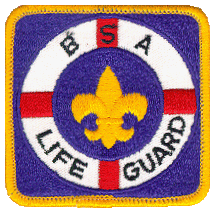 BSA Lifeguard
BSA Lifeguard
Extensive changes to the requirements for the BSA Lifeguard Award were made in 2017. Those changes were not shown in the 2018 edition of Boy Scout Requirements, and are no longer included in the Scouts BSA Requirements book. The current requirements can be found here: Application for BSA Lifeguard (430-033WB - 2017 Revision)
Modified Requirements
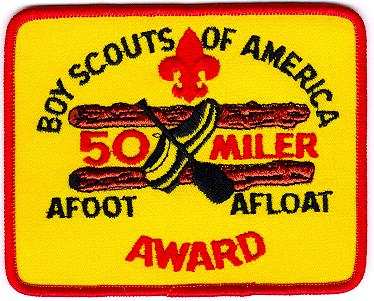 50
Miler Award
50
Miler Award
Changes were made to requirements 1 and 4, as shown below.
- Make complete and satisfactory plans for the trip, including the possibilities of advancement, conservation, leadership, and service.
- Unit or tour leader must then file a the 50-Miler Award application with the local council service center. This application gives additional details about planning the trip.
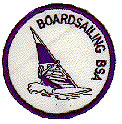 Boardsailing
BSA
Boardsailing
BSA
There were no changes to this award.
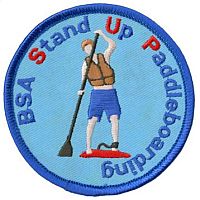 BSA
Standup Paddleboarding
BSA
Standup Paddleboarding
Changes were made to requirement 5, as shown below.
- Describe the correct appropriate type of leash to wear in the appropriate different water venues.
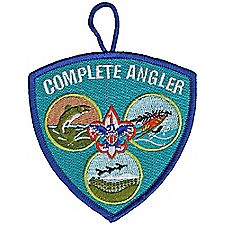 Complete
Angler
Complete
Angler
There were no changes to this award.
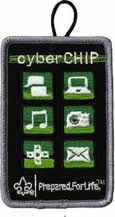 Cyber
Chip
Cyber
Chip
A change was made to requirement 5 for Scouts in grades 9-12, as shown below.
- As an individual or patrol, use the EDGE method and the Teen Volunteer Student Project Kit to teach Internet safety rules, behavior, and "netiquette" to your troop or another patrol. You are encouraged to use any additional material and information you have researched. Each member of the patrol must have a role and present part of the lesson. (www.NetSmartz.org/scouting)
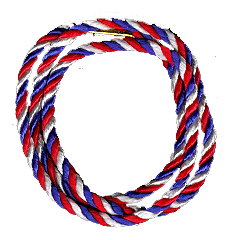 Den Chief Service Award
Den Chief Service Award
Gender neutrality changes were made to requirements 7 and 11h and changes to requirements 8 and 11f, as shown below.
- Be a friend to the boys Cub Scouts in the den.
- Take part in weekly meetings or as often as the den meets. (for a minimum of six months)
- Assist three Webelos/Arrow of Light Scouts to join a troop.
- Recommend to your Scoutmaster, Skipper, or Venturing Adviser another Boy Scout, Sea Scout, or Venturer to be a den chief.
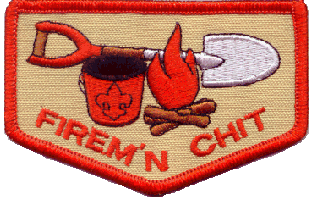 Firem'n
Chit
Firem'n
Chit
Gender neutrality changes were made to the requirements, as shown below.
This certification grants a Scout the right to carry fire-lighting devices (matches, lighters, etc.) and to and build campfires. The Scout must show his their Scout leader, or someone designated by his leader, that he understands his their leader, an understanding of the responsibility to do the following:
- I have read and understand use and safety rules from the Boy Scout Scouts BSA Handbook.
- I will make sure that water and/or a shovel is readily available. I will promptly report any wildfire to the proper authorities.
The Scout's "Firem'n Rights" can be taken from him if he fails in his away if they fail in their responsibility.
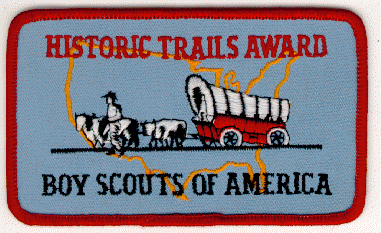 Historic
Trails Award
Historic
Trails Award
Changes were made to requirements 1 and 3, as shown below.
- Locale a historic trail or site and study information relating to it. (The information may be obtained from an adult historic society, public library, or people living near the trail or site.) using http://bsatap.org/bsa-hisloric-trails-index/ or by contacting local councils. Have participating Scouts study materials regarding the historical aspect of the trail or site using council-provided pamphlets, web-based resources, local historic societies, or the library.
- Cooperate with an adult group such as a historic society to restore and mark all or part of this trail or site. (This may be done during the hike or overnight camp.) Or cooperate with such a group to plan and stage Conduct a substantial service project or trail/site restoration under the supervision or permission of the owner or sponsoring agency of the trail or site. An alternative to a project can be a historic pageant, ceremony, or other public event related to this trail or site—such . Such an event should be large enough to merit coverage by the local press.
Interpreter Strip
A change was made to the instruction on where the patch is worn, as shown below.
UNIFORM INSIGNIA WORN CENTERED ABOVE "BOY SCOUTS OF AMERICA" or "SCOUTS BSA" STRIP
 Morse
Code Interpreter Strip
Morse
Code Interpreter Strip
No changes were made, other than the change listed for the Interpreter Strip above.
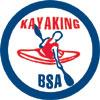 Kayaking
BSA
Kayaking
BSA
A gender neutrality change was made to requirement 4c, as shown below.
- Show how to approach a capsized paddler in your kayak and tow him them to shore.
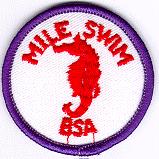 Mile
Swim BSA
Mile
Swim BSA
There were no changes to this award.
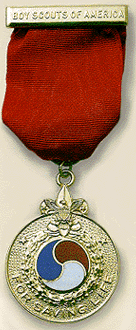
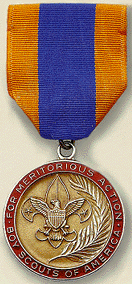
 National
Court of Honor - Lifesaving, Meritorious Action, and Heroism Awards
National
Court of Honor - Lifesaving, Meritorious Action, and Heroism Awards
Changes were made to the title and introduction and the Heroism Medal wasadded as item 3, with items 3-5 renumbered as 4-6, as shown below.
Lifesaving, and Meritorius Action , and Heroism Awards
National awards for lifesaving, and meritorious action and Heroism are made only for outstanding and unusual acts
that demonstrate unusual heroism, skill or bravery and reflect Scouting ideals, based on the following criteria:
Heroism Medal.
Has demonstrated heroism and skill or resourcefulness in saving or attempting to save a life at minimal personal risk..
3. Medal of Merit.
Has performed an act of service of a rare or exceptional character that reflects an uncommon degree of concern for the well-being of others.
4. National Certificate of Merit.
Has performed a significant act of service that is deserving of national recognition. Note: If the action is deserving of merit but does not qualify for a national award, the Scout may be eligible for the Local Council Certificate of Merit, No. 33732 606760.
5. Local Council Certificate of Merit.
The situation does not meet the criteria for a National Court of Honor award but the act is deserving of recognition. The case is not extraordinary, did not call for unusual skill and was not exceptional in nature but was of outstanding service and did reflect the high ideals of Scouting.
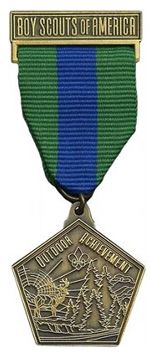 National
Medal for Outdoor Achievement
National
Medal for Outdoor Achievement
Changes were made to the introduction, and gender neutrality changes were made to requirements 1 and 7, as shown below.
The National Medal for Outdoor Achievement is the highest recognition that a Boy Scout, Sea Scout, or Venturer can earn for exemplary achievement, experience, and skill in multiple areas of outdoor endeavor. As is the case for the National Outdoor badges, outdoor activities completed as part of an approved Cub Scouting, Scouts BSA, Sea Scouting, Venturing, or Exploring program may be used it they meet the requirements. In order for a youth to earn the National Medal for Outdoor Achievement, the youth must complete the following requirements:
- Earn the Boy Scout Scouts BSA First Class rank or Sea Scout Apprentice rank, or complete Venturing Ranger Award requirements 1 through 6 and hold the Venturing Discovery Award.
- Plan and lead, with the approval of your unit leader, an outing for your troop, team, ship, crew, patrol, or squad in two of the following activity areas: hiking and backpacking, aquatic activities, or riding. Include in each outing a service element addressing recreational impacts resulting from that type of activity. With the approval of your unit leader, you may plan and lead the outings for another Cub Scout pack, Boy Scout troop, Sea Scout ship, or Venturing crew.
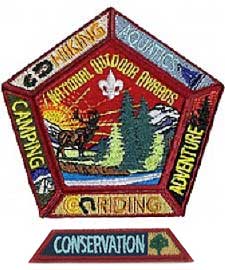 National
Outdoor Awards for Camping, Aquatics, Conservation, Hiking, Riding, and
Adventure
National
Outdoor Awards for Camping, Aquatics, Conservation, Hiking, Riding, and
Adventure
Gender neutrality changes were made to the introduction and requirement 1 for each of the badges, and changes were made to the introduction, and the following requirements: Camping 4, Hiking 3, Aquatics 2, 3, 4, & 5, and Conservation 2 & 3a, and the footnote to Hiling requirement 3 was deleted. The changes were as follows:
The six National Outdoor Badges badges of the award recognize a Boy Scout, Sea Scout, or Venturer who demonstrates both knowledge and experience in camping, aquatics, conservation, hiking, riding, or adventure. Scouts Youth earning the National Outdoor badges have demonstrated that they are knowledgeable, safe, and comfortable in the outdoor activity covered by the badge. Outdoor activities completed as part of any BSA program (Cub Scouting, Scouts BSA, Sea Scouting, Venturing, or Exploring) may be used to satisfy the requirements of the National Outdoor Awards so long as conducted as part of an approved unit, district, or council program. This is referred to as "under the auspices and standards of the Boy Scouts of America" in the requirements.
- Camping
- A Boy Scout, Sea Scout, or Venturer may earn the National Outdoor Badge for Camping upon successfully completing the following requirements:
- Earn the Boy Scout Scouts BSA First Class rank, Sea Scout Apprentice rank, or complete Venturing Ranger Award requirements 1–6.
- Complete 25 days and nights of camping—(Sea Scouts may be on a boat), including six consecutive days (five nights) of camping (Sea Scouts may be on a boat), approved and under the auspices and standards of the Boy Scouts of America—including nights camped as part of requirements 1 through 3 above. Boy Scouts Youth must complete six consecutive days (five nights) of the 25 nights at a BSA accredited resident camp.
- Hiking
- A Boy Scout, Sea Scout, or Venturer may earn the National Outdoor Badge for Hiking upon successfully completing the following requirements:
- Earn the Boy Scout Scouts BSA First Class rank, Sea Scout Apprentice rank, or complete Venturing Ranger Award requirements 1–6.
- Complete the requirements for one of the following:
- Orienteering merit badge, or
- Geocaching merit badge, or
- *Pathfinding merit badge, or
- Venturing Ranger Land Navigation core requirement.
*Only the Scouts who have already earned the Pathfinding merit badge during Scouting's centennial celebration in 2010 and first quarter of 2011 can receive credit for this requirement. This badge has been discontinued since then, and can no longer be earned.
- Aquatics
- A Boy Scout, Sea Scout, or Venturer may earn the National Outdoor Badge for Aquatics upon successfully completing the following requirements:
- Earn the Boy Scout Scouts BSA First Class rank, Sea Scout Apprentice rank, or complete Venturing Ranger Award requirements 1–6.
- Complete the requirements for the Swimming and Lifesaving merit badges. merit badge and either Lifesaving merit badge or Venturing Ranger Lifesaving elective. (For Sea Scouts, Swimming merit badge requirements are an Ordinary rank requirement, and Lifesaving merit badge requirements are an Able rank requirement).
- Earn Complete the requirements for the Mile Swim BSA Award.
- Complete the requirements for at least one of the following merit badges: Canoeing, Fishing, Fly-Fishing, Kayaking, Rowing, Scuba Diving, mall Boat Sailing, Water Sports, or Whitewater merit badges or Ranger Award Fishing, Scuba or Watercraft electives. Complete at least 25 hours of on-the-water time, applying the skills that you learned in the merit badges badge or Ranger elective.
- Complete at least 50 hours of any combination of swimming, canoeing, fishing, fly-fishing, kayaking, rowing, scuba, small-boat sailing, stand up paddleboarding, water sports, or whitewater activity under the auspices of the Boy Scouts of America, including time spent in requirements 2 through 4.
- Conservation
- A Boy Scout, Sea Scout, or Venturer may earn the National Outdoor Badge for Conservation upon successfully completing the following requirements:
- Earn the Boy Scout Scouts BSA First Class rank, Sea Scout Apprentice rank, or complete Venturing Ranger Award requirements 1–6.
- Demonstrate the safe use of five of the following conservation tools: pick or pick axe pickax; shovel or spade; ax; bow saw; cross-cut saw; prybar; sledge hammer; loppers or shears; fire rake or McLeod; and/or Pulaski. Discuss the ethical use of the tools you chose.
- Environmental Science merit badge or Sustainability merit badge or both Venturing Ranger Conservation core and Ecology elective
- Riding
- A Boy Scout, Sea Scout, or Venturer may earn the National Outdoor Badge for Riding upon successfully completing the following requirements:
- Earn the Boy Scout Scouts BSA First Class rank, Sea Scout Apprentice rank, or complete Venturing Ranger Award requirements 1–6.
- Adventure
- A Boy Scout, Sea Scout, or Venturer may earn the National Outdoor Badge for Adventure upon successfully completing the following requirements:
- Earn the Boy Scout Scouts BSA First Class rank, Sea Scout Apprentice rank, or complete Venturing Ranger Award requirements 1–6.
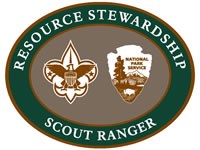 National
Park Service - Resource Stewardship Scout Ranger
National
Park Service - Resource Stewardship Scout Ranger
Changes were made to requirement ___, as shown below.
- With your counselor, discuss general safety precautions and Material Safety Data Sheets related to welding. Explain the importance of the MSDS SDS.
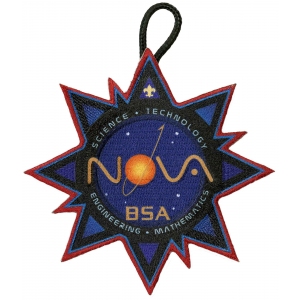 Nova
and Supernova Awards
Nova
and Supernova Awards
Gender neutrality changes and other general changes were made to the description of the Nova and Supernova Awards in the requirements book. We have not reproduced that information in its entirety, but have incorporated much of the material on our website.
In addition, although not included in the Requirements book, five new Nova Awards have been added, one for Cub and Webelos Scouts, two for Scouts BSA, and two for Venturers and Sea Scouts. The titles and subject areas are as follows:
- Cub Scouts and Webelos Scouts
- Cub Scouts Can Code (Computers)
- Scouts BSA
- Mendel's Minions (Genetics)
- Hello, World (Computer Programming)
- Venturing and Sea Scouts
- What a Life! (Biology)
- Execute! (Programming)
The requirements for the new Nova awards for Scouts BSA are shown below, after the other special opportunities.
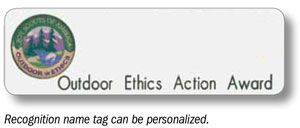 Outdoor
Ethics Action Award
Outdoor
Ethics Action Award
Changes were made to each requirement, as shown below.
- Do the following:
- Earn Unless already completed, earn the Outdoor Ethics Awareness Award.
- Complete the BSA outdoor ethics orientation or the BSA Leave No Trace 101 course course.
- Explain how each of the four points of the Outdoor Code ( www.scouting.org/outdoor-programs/outdoor-ethics) guides your actions when outdoors.
- Do the following:
- Read the Boy Scout Handbook chapter 7 of the Scouts BSA handbook on outdoor ethics.
- Teach a skill related to the Outdoor Code or Leave No Trace to another Scout in your troop or another Scouting unit.
- Complete one of the following:
- Successfully complete a term as your troop outdoor ethics guide, including reading the Outdoor Ethics Guide Handbook and carrying out a plan developed with the support of your advisor or Scoutmaster.
- Work with your troop's patrol leaders' council to plan Participate in an outing that emphasizes the complete set of Leave No Trace (http://lnt.org/learn/7-principles) or Tread Lightly! (www.treadllghtly.org/learn) principles. All members of the troop participating in the outing should practice the specific outdoor ethics use outdoor ethics and the specific skills needed to minimize impacts from their use of the outdoors.
- Follow the Outdoor Code, Leave No Trace, and Tread Lightly! principles on three outings. Write one or more paragraphs about the three outings you attended, a paragraph on each outing explaining how you followed the Outdoor Code, Leave No Trace, and Tread Lightly! Discuss what you wrote with your unit leader, troop outdoor ethics guide, outdoor ethics guide advisor, Share it with your unit leader or an individual who has completed the BSA Leave No Trace 101 course, the Leave No Trace Master Educator course, the Leave No Trace Trainer course, the Tread Lightly! Master Tread Trainer course, or the Tread Lightly! Tread Trainer outdoor ethics orientation course.
- On a troop outing, help your troop on a service activity that addresses recreational impacts related to the type of outing. The project should be approved in advance by the landowner or land manager and lead to permanent or long-term improvements.
- Participate in a report at a court of honor or similar family event on the service activity conducted to complete in requirement 5.
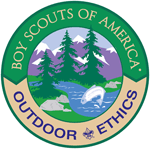 Outdoor Ethics Awareness Award
Outdoor Ethics Awareness Award
The URLs in requirements 1,2, 3, and 4 were corrected, a gender neutrality change was made to the introduction, and changes were made to requirements 4 and 5. The revisions are as follows:
Boy Scouts interested in learning more about outdoor ethics and Leave No Trace should begin by exploring the Outdoor Ethics Awareness Award. The requirements are as follows:
- Recite from memory and explain the meaning of the Outdoor Code (www.scouting.org/outdoor-programs/outdoor-ethics).
- Watch the National Park Service Leave No Trace video (www.nps.gov/havo/planyourvisit/leave-no-trace-video.htm).
- Complete the Leave No Trace online youth course (http://lnt.org/learn/online-awareness-course ). Print the certificate.
- Earn Complete the Tread Lightly! online course certificate (https://tread-lightly.teachable.com/p/online-awareness-course). Print the certificate when you are done.
- Participate in an outdoor ethics course, workshop, or training activity facilitated by a person who has completed the BSA Leave No Trace 101 course or the BSA outdoor ethics orientation course OR by or is a BSA outdoor ethics trainer or master who has completed one of the following: the Leave No Trace Master Educator course, the Leave No Trace Trainer course, the Tread Lightly! Master Tread Trainer course, or the Tread Lightly! Tread Trainer course.
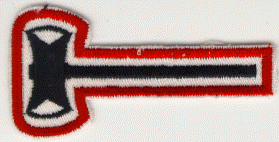 Paul
Bunyan Woodsman
Paul
Bunyan Woodsman
Changes were made to the introduction, new requirements 1, 2, and 5 were added and old requirements 1, 2, and 3 were revised and renumbered as 3, 4, and 6. The changes are shown below.
Study the Boy Scout Handbook Scouts BSA handbooks and the Camping merit badge pamphlet, and demonstrate to your Scoutmaster or other qualified person the following:
- Explain the most likely hazards you may encounter while participating in camping activities and what you should do to anticipate, help prevent, mitigate, and respond to these hazards.
- Show that you know first aid for Injuries that could occur while using woods tools.
- 1. Show that you have earned Earn the Totin' Chip.
- 2. Help a Scout or patrol earn the Totin' Chip, and demonstrate to him (them) them the value of proper woods-tools use on a troop camping tgrip.
- Be familiar with the proper and safe use of woods tools including:
- Ax
- Hatchet
- Loppers
- McLeod
- Pulaski
- Saw
- Shovel
- With official approval and supervision, do ONE of the following: using woods tools, spend at least two hours doing one of the following conservation oriented projects:
- Clear trails or fire lanes.
- Trim a downed tree, cut into four" 4-foot lengths, and stack; make a brush pile with the branches.
- Build a natural retaining wall or irrigation way to aid in a planned conservation effort.
Religious Emblems
Changes were made to the information for a number of the religious organizations. See the appropriate web page for more information.
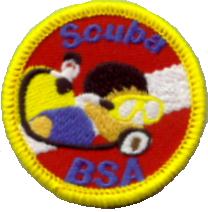 Scuba
BSA Award
Scuba
BSA Award
A Change was made to the Note following the requirements, as shown below.
NOTE: The counselor for Scuba BSA must hold an instructor rating and be in current teaching status with PADI, NAUI, SSI or RSTC member organization another member of the RSTC in accordance with BSA scuba policies. Instruction must meet the minimum training standards for introductory scuba experiences set by the RSTC and guidelines provided in the Scuba BSA Brochure, No. 13-971. BSA scuba policies are provided in that brochure and also in the Guide to Safe Scouting.
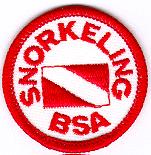 Snorkeling
BSA
Snorkeling
BSA
There were no changes to this award.
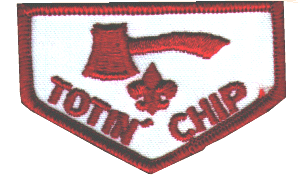 Totin'
Chip
Totin'
Chip
Gender neutrality changes were made to requirement 1 and the text before and after the requirements, as shown below.
This certification grants a Scout the right to carry and use woods tools. The Scout must show his their Scout leader, or someone designated by his their leader, that he the Scout understandshis their responsibility to do the following:
- Read and understand woods tools use and safety rules from the Boy Scout Handbook Scouts BSA handbooks.
The Scout's "Totin' Rights" can be taken from him if he fails in his away if they fail in their responsibility.
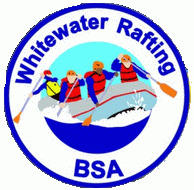 Whitewater
Rafting BSA
Whitewater
Rafting BSA
There were no changes to this award.
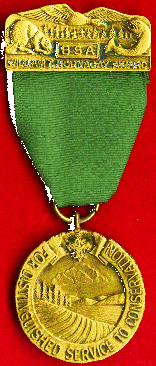 William
T. Hornaday Awards
William
T. Hornaday Awards
Some gender neutrality changes were made and Sea Scouts were identified as being eligible for the awards. We replaced the webpage on our site with text that includes the current text.
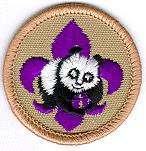 World
Conservation Award
World
Conservation Award
The requirements in the Scouts BSA Requirements 2019 book was updated to add Sustainability as an alternative to Environmental Science in requirement 1. However, the application form for this badge has an additional requirement that is not listed. The changed requirement is shown below, along with the requirement which was not in the book.
- Environmental Science OR Sustainability merit badge.
AND participate in a conservation project as part of an approved Scouting program totaling at least three hours that addresses a conservation need common to more than one country.
NEW NOVA AWARDS
Mendel's Minions
This new Nova award for Scouts BSA is designed to help explore how genetic information affects your life every day. The requirements are as follows:
- Choose A or B or C and complete ALL the requirements.
- Watch not less than three hours total of shows or documentaries that discuss genetics and/or genomics. Then do the following:
- Make a list of at least five questions or ideas from the show(s) you watched.
- Discuss two of the questions or ideas with your counselor.
- Read (not less than three hours total) about genetics or genomics. Then do the following:
- Make a list of at least five questions or ideas from each article.
- Discuss two of the questions or ideas with your counselor.
- Do a combination of reading and watching (not less than three hours total). Then do the following:
- Make a list of at least two questions or ideas from each article or show.
- Discuss two of the questions or ideas with your counselor.
- Complete one merit badge from the following list. (Choose one that you have not already used toward another Nova Award.) After completion, discuss with your counselor the genetic component of the merit badge you selected.
Animal Science Insect Study Public Health Bird Study Mammal Study Reptile and Amphibian Study Forestry Medicine Veterinary Medicine Gardening Nature /tr> - Complete two of the following activities:
- Teach the basics of genetic inheritance to your patrol (or similar group), using gummy bear genetics or a similar method.
- Helpful Link—Making Mendel's Model Manageable: www.nsta.org/publications/news/story.aspx?id=51651
- Extract DNA from saliva, strawberries, or a banana.
- Grow at least three generations of pea plants and explain the inheritance patterns. Helpful Link: http://science.lovetoknow.com/life-sciences/gregor-mendels-pea-plant-experiment
- Create a three-dimensional model of DNA and explain how it leads to the production of proteins.
- Present a report of at least 800 words or 10 minutes (with visual aids) on one of the following opics. Make sure to include the ethical issues involved in your topic. If possible, present our report to your unit or another group in addition to presenting to your counselor.
- Mendelian inheritance, DNA, RNA, genetics, genomics, sequencing, and Punnett squares
- Genetic diseases, personalized medicine, and genetic counseling
- Genetically modified food, transgenic animals, and hybrid foods
- Use of large genetics databases for forensic analysis/solving crimes, genealogical research, or medical studies (The Cancer Genome Atlas (TCGA), Catalogue of Somatic Mutations in Cancer (COSMIC), Exome Aggregation Consortioum (ExAC), 100,000 Genomes Project, mitochondria! DNA, etc.)
- Pharmacogenetics and oncogenomics
- Human Genome Project
- CRISPR (Clustered Regularly-Interspaced Short Palindromic Repeats)
- Biotechnology, biologics, and biosimilar drugs
- Another related topic approved by your counselor in advance
- Visit a place where genetic and genomic information is being used, e.g., a biotechnology company or research lab, genetic counselor, a physician's office, crime lab, zoo, natural history museum, farm, hatchery, nursery/greenhouse, etc. Discuss the work done there with one (or more) of the employees. Find out how they are using genetic information, how it has changed their work, and what they look forward to in the future.
- Discuss with your counselor how genetics and genomics affect your everyday life and how you think it will affect your life in the future.
Hello World
This new Nova award for Scouts BSA is designed to explore the world of coding or computer programming. The requirements are as follows:
- Choose A or B or C and complete ALL the requirements.
- Watch (not less than three hours total) computer-related shows or documentaries that involve computers, coding, and/or computer-related careers. Then do the following:
- Make a list of at least five questions or ideas from the shows you watched.
- Discuss two of the questions or ideas with your counselor.
- Read (not less than three hours total) about computers, coding, and careers that involve computers. Then do the following:
- Make a list of at least five questions or ideas from the articles you read.
- Discuss two of the questions or ideas with your counselor.
- Do a combination of reading and watching (not less than three hours total). Then do the following:
- Make a list of at least five questions or ideas from the articles you read or the shows you watched.
- Discuss two of the questions or ideas with your counselor.
- Complete ONE merit badge from the following list. (Choose one that you have not already used for another Nova award.) Discuss with your counselor how the merit badge you earned uses coding.
Programming Robotics Digital Technology - Explore different concepts in computer programming. Discuss these programming concepts with your counselor:
- What is the difference between a local and global variable?
- What are integer, Boolean, floating point, and character data types and what values can each of these data types hold?
- What is a scalar variable versus an array or list variable?
- What are these types of control flow instructions, and how do they work?
- A While Loop
- A Do-While Loop
- For loop which performs a fixed number of iterations (i.e. For Loop)
- An If statement
- What is a function and when is it used?
- What is a parameter to a function?
- What is a key/value pair in a database?
- What is a Universal Resource Locator (URL) and where is it used??
- In a programming language of your choosing, do the following:
- Write a program that determines if an input string of characters is a palindrome.
- Write a program of your choice from the following list.
These programs can be coded in a programming language such as App Lab -https://code.org/educate/applab
- A program that calculates the sum of a set of input numbers
- A program to report the largest and the smallest numbers from a set of input numbers.
- A program that calculates the average of a set of input numbers.
- A program that calculates the factorial of an input number.
- A program that calculates the sum of all numbers from a user input starting number to a user input ending number.
- In a programming language that may be the same or different from the programing language used above, write a program selected from the following list. Work with your counselor to define the requirements — input from a user or from a file? Output to the screen or to a file? You may not use a GUI-based programming interface for this requirement, but a language like Python, Small Basic or Lisps (a family of powerful, syntax-light languages including Scheme or Common Lisp) would be appropriate.
- A program that generates a random whole number between 1 and 10 and then asks the user to guess the number. When the guess is not correct, the program tells the user that the guess is too high or too low and then asks the user to try again. The program completes when the user correctly guesses the number.
- A program that correctly sorts in ascending order, a sequence of at least 15 input numbers.
- A program that accepts input, performs a calculation on the input and produces an output based on the input. It must use a function with one or more parameters to perform the calculation.
- A program that takes a set of at least 15 characters from a user and then displays the string in reverse order.
- A program that displays an interactive webpage that accepts user input and modifies its display based on the input (See Web Lab -https://code.org/educate/weblab for example)
- A computer game of your choosing which uses interactive characters, requires skill and reports a winner or a loser. (See Game Lab -https://code.org/educate/gamelab for example)
- Any other computer program agreed on by you and your counselor that uses both variables and control flow instructions.
- For the three programs you wrote for requirements 4 and 5, explain to your counselor how each of your programs works and why you chose the particular instructions and variables that you did.
- Do ALL of the following requirements.
- Visit a company/school/institution where computer programs are being developed.
- Talk to someone there about how they use coding in their work. Write down at least five questions to ask the person you visit and review the answers with your counselor
- Discuss with your counselor how coding is being used at the destination you visited.
- Discuss with your counselor how coding affects your everyday life, and what you have learned while working on this Nova.
This analysis was prepared as a service to Scouts and
Scouters nationwide
Paul S. Wolf
Secretary
US Scouting Service Project, Inc.
This document is a product of the U.S. Scouting Service Project, Inc. (USSSP). It may be reproduced by or for Scouting volunteers and used locally for training purposes consistent with the programs of the Boy Scouts of America (BSA), the World Organization of the Scout Movement (WOSM) or other Scouting and Guiding Organizations. However, it may not be used or reproduced for electronic redistribution or for commercial or other non-Scouting purposes without the express permission of the U. S. Scouting Service Project, Inc. (USSSP) or other copyright holders. The USSSP is not affiliated with BSA or WOSM and does not speak on behalf of BSA or WOSM. Opinions expressed in this document are those of the web authors.
A print (PDF) version of this document can be downloaded here.
Printed copies of this document may be freely distributed
for use in the Scouting program,
so long as the source is acknowledged, but copying the information to another
web site is NOT authorized.
© 2019 - U.S. Scouting Service Project, Inc. - All Rights
Reserved
The text and images reproduced herein is © - Boy Scouts of America, and
is used by permission.







